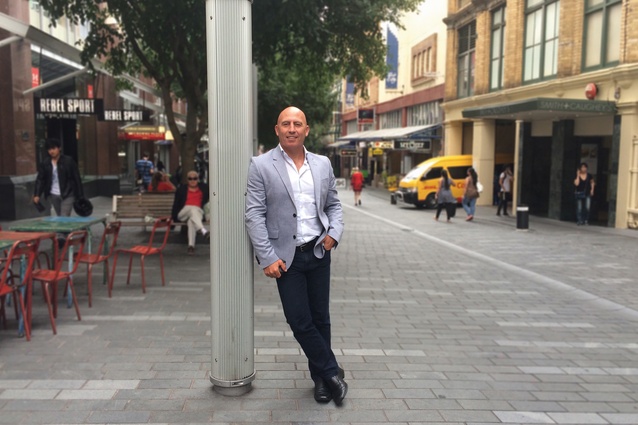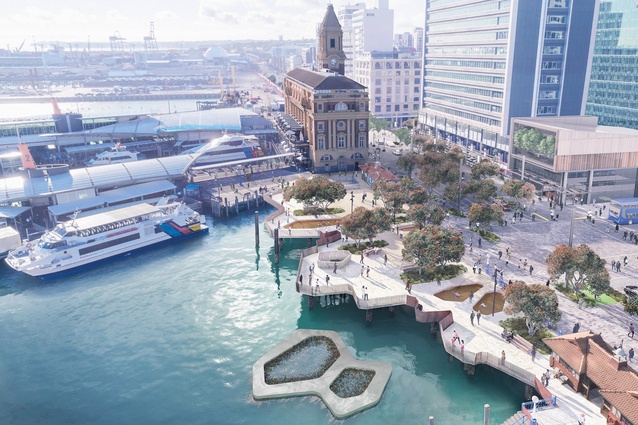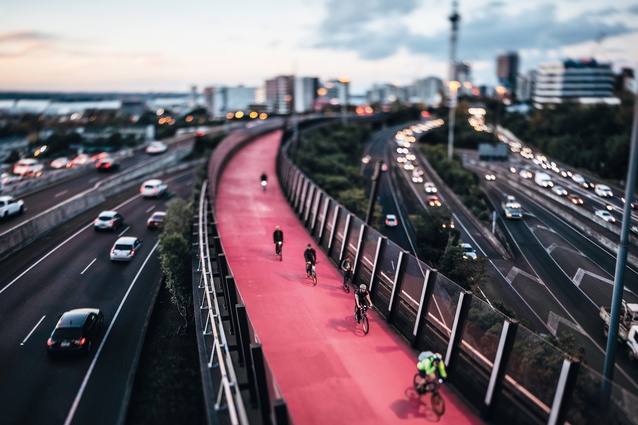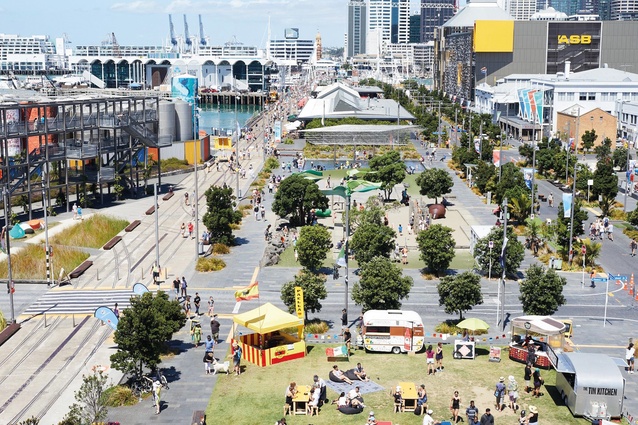Action man: Ludo Campbell-Reid
Auckland’s first-ever Design Champion, Ludo Campbell-Reid, departs our shores in January for a new position at Wyndham City Council, Melbourne. Many would agree that, after 13 years, he leaves Auckland in a much better state than it was in when he arrived. Amanda Harkness spoke with Campbell-Reid about the highs and lows of his legacy.
Amanda Harkness (AH): What were you charged with championing?
Ludo Campbell-Reid (LCR): When I arrived in 2005, I felt that Auckland had abandoned its central city. There was no one walking, no one cycled, very few people used public transport, no one shopped. The streets were dead after five o’clock in the evening – everyone was on their way home. It seemed to me that Aucklanders had fallen out of love with Auckland. I was brought in to fix a problem with best-practice architecture, city design and planning.
AH: How do you know when you’ve achieved good urban design?
LCR: Good urban design is so much more than just aesthetics; it’s about how a city functions. We’ve just reached 103 million passenger transport trips a year: double 10 years ago. People told me that Aucklanders would never get out of their cars. That’s wrong. Don’t ever tell anybody they can’t do something. Particularly cities: you can turn them around.
We’ve doubled the number of people both living in the central city and walking on Queen Street in the last five years. That’s not just because it looks better, it’s because it functions better; it’s safer, the pavements are wider, it’s more accessible – that’s good urban design.
Auckland is spending $600–$700 million a year on physical improvements to the city’s infrastructure and landscape. The Council and the Government are also spending about $28 billion on infrastructure across the region, and the private sector is spending about $75 billion on property development. There are now more cranes on Auckland’s skyline than there are in any city in the United States.
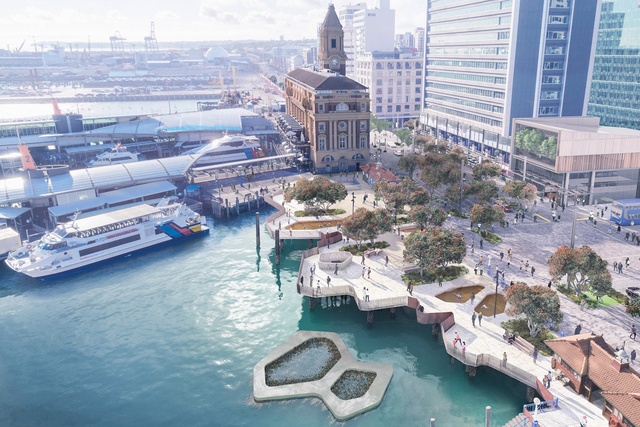
AH: Looking back, what do you see as the high points of the job?
LCR: We’ve created a city that’s competing on the world stage and is one of the most exciting places on earth to live and invest. I think it’s the sleeping giant of the Asia-Pacific region. People forget how bad the city was not so long ago. We didn’t have double-decker buses five years ago. Shared spaces have been in since 2009. There were no separated cycle lanes. No new Auckland Art Gallery five or six years ago. Wynyard Quarter didn’t exist in 2009; eight years ago, it was just a windswept, post-industrial, concrete jungle with only the SeaLink to Waiheke and the fish market. Now, it’s one of the great urban design projects of the world.
And it’s not just downtown. There’s Hurstmere Green in Takapuna, New Lynn, Hobsonville – all these projects didn’t really exist 13 years ago. The city’s come to life and it’s starting to find its rhythm.
AH: How do you ensure the private sector comes on board with your thinking?
LCR: The Urban Design Panel has been a really powerful tool in terms of the impact it’s had. It has the full support of its founding partners – the NZIA, Property Council, Planning Institute, Urban Design Forum, NZILA – and it’s their members who are rebuilding Auckland.
It’s about the performance of our buildings, which is linked to the performance of assets as investments; customers and investors start to see those assets as something they would rather invest in than in someone else’s asset. So, people are starting to demand good design rather than complaining about being forced to adhere to certain rules. I think that’s one of my greatest successes: that I have built an army of vocal, active, connected people who politicians listen to. Those people will look after Auckland going forward.
AH: How has Auckland Conversations worked in the mix?
LCR: City transformation requires not just physical change but also psychological and behavioural change; that is why we developed the Auckland Conversations programme. It’s brought around 100 speakers, both local and international, to Auckland to help promote best-practice city building.
One of the highlights was having Janette Sadik-Khan, the former commissioner of transport for New York, speak to two and a half thousand people about how New York transformed central Manhattan from a place of cars by closing Times Square and 42nd Street to traffic. That gave us the confidence to launch projects like Lightpath, which was an opportunistic moment where we grabbed a redundant motorway lane and built a soaring, hot-pink cycleway for people.
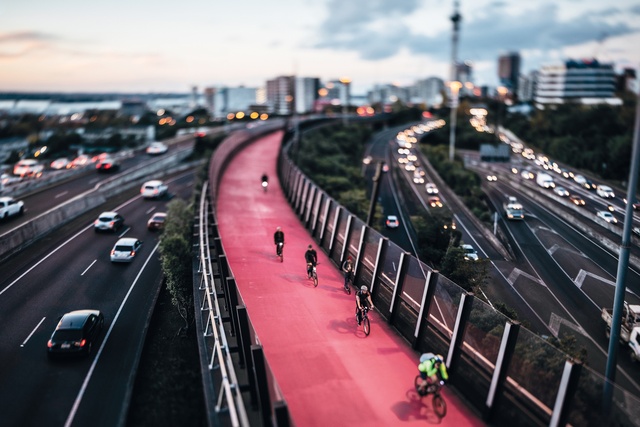
AH: What do you see as your greatest legacy?
LCR: I’m immensely proud that a new city is about to emerge: a post-colonial city, which will tell a story of our Māori culture. Auckland was a fine European city and, in the ’70s, ’80s and ’90s, it was deconstructed. We ripped the heart and soul out of the beautiful human-scaled architecture and built poor-quality development for 20 or 30 years.
Then we had the urban design ‘renaissance’, and what’s happening now includes the Te Aranga Design Principles programme, where mana whenua are co-designing spaces with us. And the dream that I had when we met mana whenua early was to talk to them about what type of city they wanted. How would they feel secure and comfortable in their city? What would that type of city look and feel like? We’ve provided a landing pad where that conversation can occur and I think that will be my proudest legacy.
AH: Were there any low points or missed opportunities?
LCR: If you put yourself out there, you have to be prepared for the criticism. It can be quite personal and upsetting, so you have to be resilient and it’s been 13 years of deep resilience.
There was a lot of public criticism during the initiation of the shared space projects and it’s the same with the bike lanes, which are seen as a disruptive pain. So, it’s about how we build cycleways with the community: how we engage. Public transport is the key to unlocking the economic power of the city because there’s generally no space for more roads in our city centres and private vehicles are the most inefficient way to move people.
I am also frustrated with speed. I want things to happen more quickly. You have the mandate but you don’t have all the mechanisms and tools to achieve that. Going forward, Auckland Council could rethink its governance structures because cities are constantly changing. It’s not necessarily fit-for-purpose to achieve things at the pace that we need to. It’s also about locking into the private sector and partnering with it more innovatively. I certainly think the waterfront stadium is a missed opportunity but its time will come again.
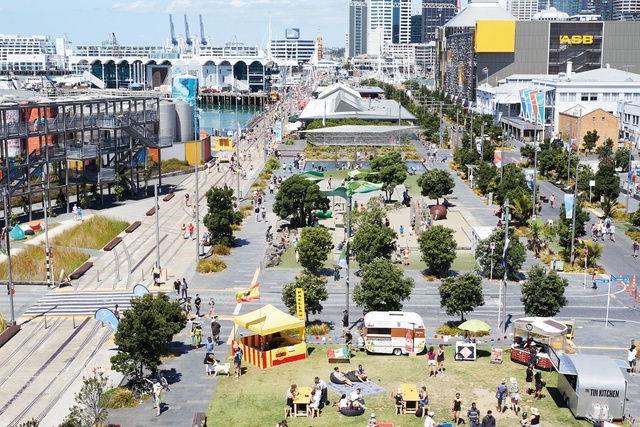
AH: Has climate change always been part of the discussion?
LCR: Absolutely. Good urban design at its epicentre is about resilience and sustainability. Now those things are mainstream but there are people still in power who won’t change, who are protecting themselves. Just as Auckland Transport has endorsed Vision Zero, now the Council needs to apply the climate change lens to every decision it makes. This will change everything.
AH: What’s the biggest challenge for Auckland now?
LCR: I think the city needs to be more opportunistic – what we call ‘tactical urbanism’ – where you test an idea before you build the final project. We should try things out. We’re building a future High Street cheaply, quickly, to show the retailers what it would look like. Auckland needs to become more temporary in the way it encourages innovation and risk-taking: to trial what the city might look like rather than commit to larger, expensive projects. Often, by the time you’ve come up with the idea and built it, the world has moved on.
The city also needs to work harder at bringing people along on the journey of transformation. The change proposed is what Aucklanders have specifically asked us for, but that doesn’t mean that everybody in the community is okay with it. So, the city needs to get better at co-creating the support for those projects and working much harder at the behaviour change aspects of them.
This article first appeared in Architecture New Zealand magazine.


